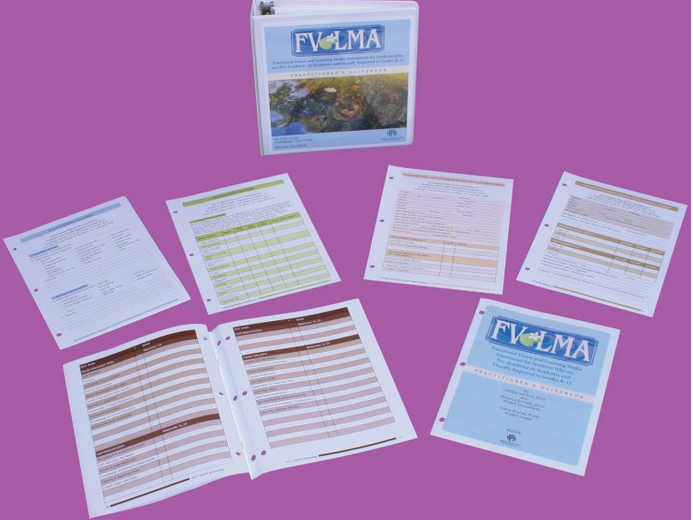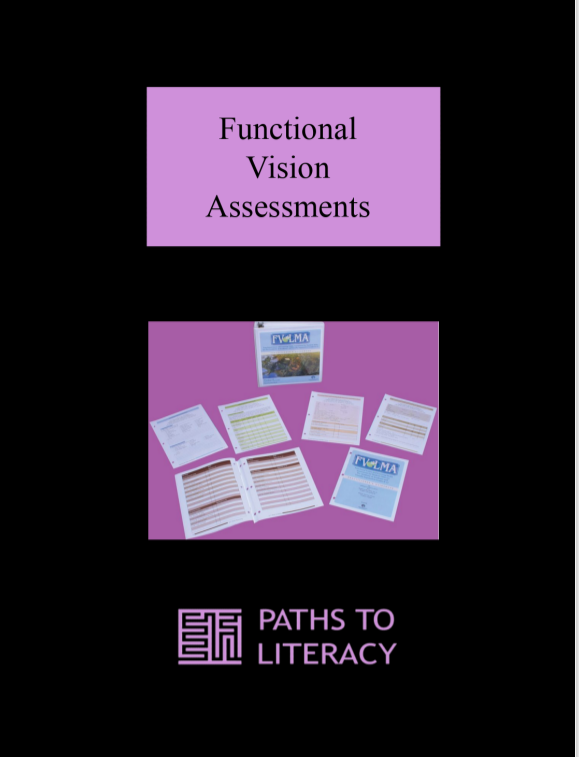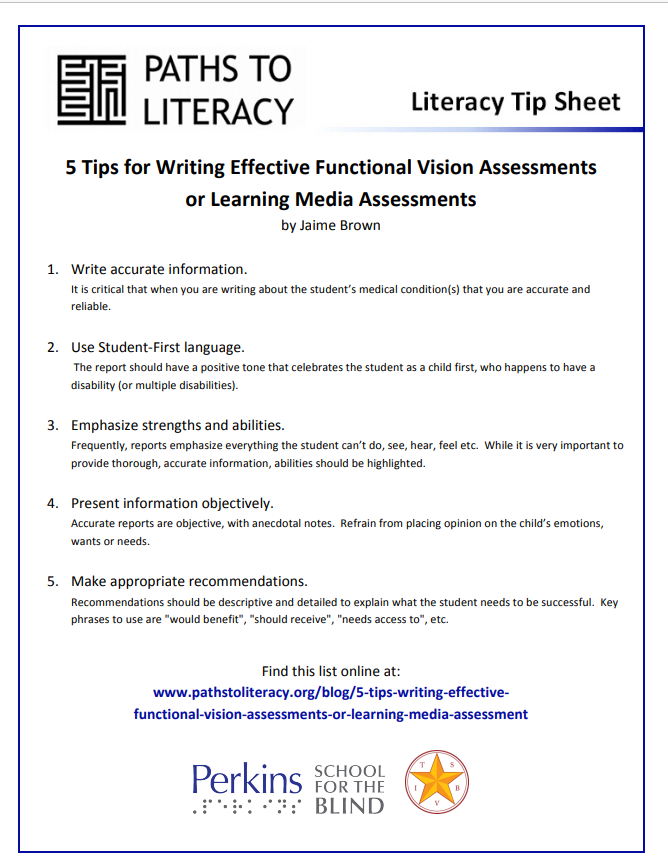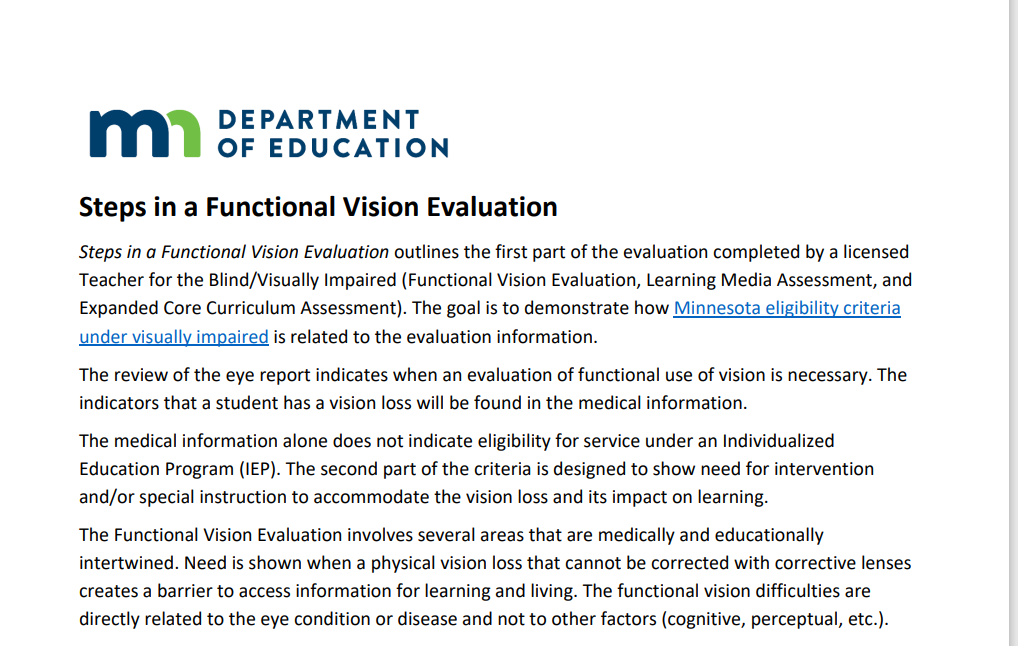Functional Vision Assessments

When there is a concern over how a student uses their functional vision, a Functional Vision Assessment (FVA) is a tool to determine how a student uses their vision in their learning environment. "Painting a picture" has been used to describe this procedure. This assessment can determine a student's strengths and needs in the area of functional vision for the educational team. We will be reviewing the Functional Vision Assessment (FVA) for the scoop of this article with specific examples, forms, and descriptors as a starting point or guide to a better understanding of the process. In this, we want to include the need for a CVI (Cortical/Cerebral Vision Impairment) if the teams suspects CVI.
A great starting point begins with the diagnosis, which is conducted medically. TVIs cannot diagnose, they are teachers in the educational field. Therefore, it is unethical to assume the student does not have any underlying medical issues that display in the form of a visual impairment. This needs to be addressed with the family, however the protocol is set up in your area. If a student's vision is impacting their ability to access learning as determined by their educational team, a Functional Vision Assessment can be done by a teacher of students with visual impairments (TVIs) .
Best practice for TVIs is to conduct three essential assessments (EA) during the initial evaluation, and throughout each re-evaluation cycle. Performing these three assessments on a regular basis ensures that any changes in functional vision, literacy access tools, and/or instructional needs are monitored to assess and address in a timely manner.
Essential Assessments as written by PaTTAN
The Three EA Are:
1. Functional Vision Assessment (FVA): The FVA evaluates the day-to-day functioning of how a child uses their remaining vision across a variety of familiar and unfamiliar environments. This evaluation is conducted to determine how the student’s vision impacts their educational performance.
2. Learning Media Assessment (LMA): The LMA is a systematic way to collect information about a student’s sensory preferences to determine initial selection of literacy medium (print, enlarged print, braille, or dual) as well as provide on-going evaluation of literacy access tools.
3. Expanded Core Curriculum (ECC) Screening Tool: This tool is used to identify the instructional priorities within and across the nine domain areas of the ECC. Once identified and prioritized, specific domain subset areas of focus are assessed. Results lead to the development of annual goals for the provision of specialized instructional programs.
In addition to the essential assessments, other evaluations in areas such as assistive technology and orientation and mobility may be conducted based on the needs of the student.
FVA Resources:
5 Tips for Writing Effective Functional Vision Assessments or Learning Media Assessments by Jaime Brown
Teaching Students with Visual Impairments has an Assessment Kit and breaks down what is put into a FVA.
Forms:
Foolproof Functional Vision Assessment Template, originally written by cortneybraile on Perkins eLEARNING
American Printing House (APH) has a FVLMA kit available for purchase. This is eligible for Federal Quota funds if you have access to them.
Minnesota's Department of Education has a FVA Handout available called The Steps in a Functional Vision Evaluation which breaks it down into steps, materials that can be used, and best practice.
Having a CVI Assessment as Part Of FVA:
A TVI must understand that traditional ocular assessments are unlikely to adequately assess the unique aspects of functional vision that are indicative of CVI, and therefore must use CVI specific tools to evaluate the impact of CVI on functional vision as stated in CVINow in their article, Getting Started with CVI Assessments. There are specific assessment tools that need to be used when assessing a student with CVI. Only doing a traditional FVA will not be enough to address their specific needs.
Some of these CVI tools are:
Dr. Dutton's Visual Inventory Skills
Functional Vision Assessments are a key starting point by a TVI when an educational team is determining the need for vision support in a student's learning environment. There are continuing education courses to better understand the process but also reaching out to experienced TVIs as a mentor to assist or even observe their process is critical. Perkins eLEARNING has a webinar series





